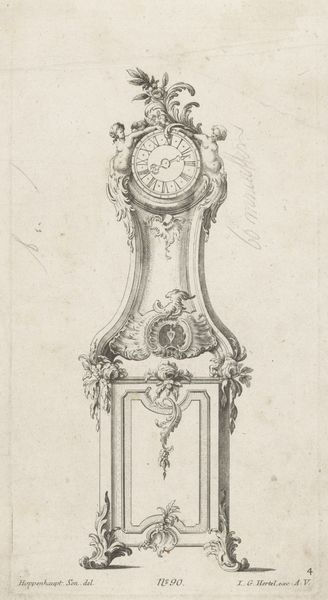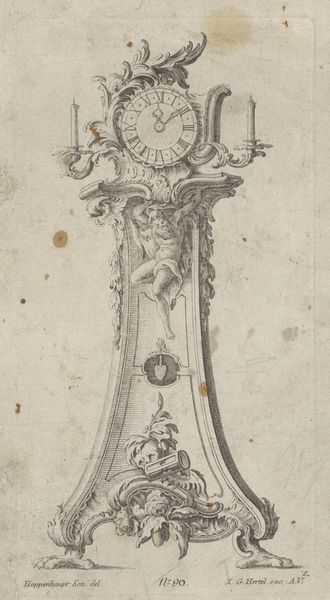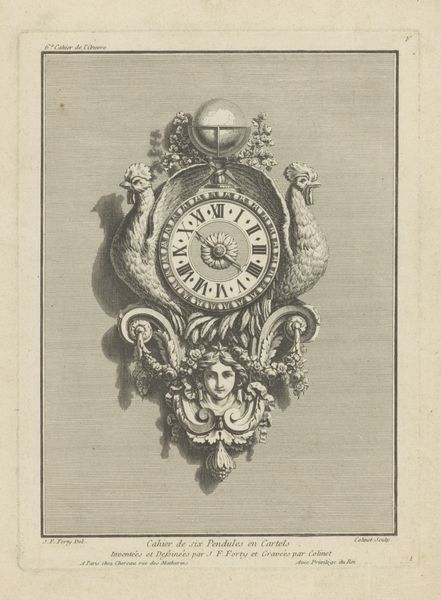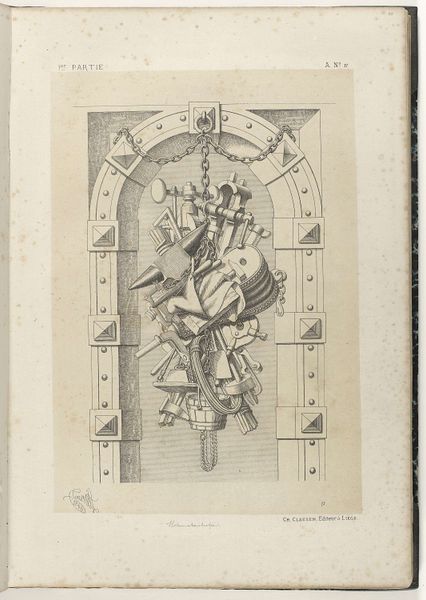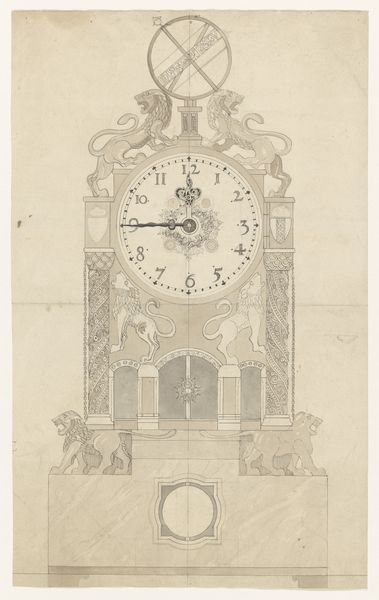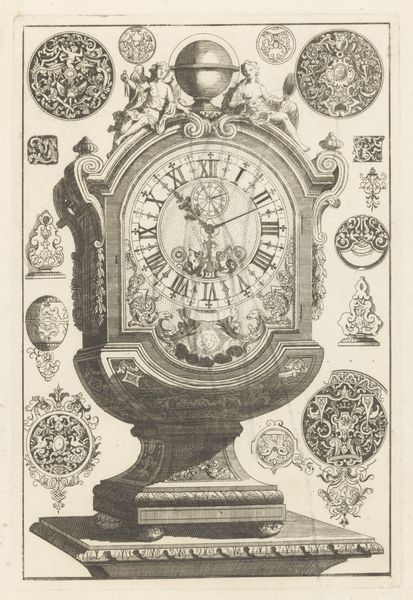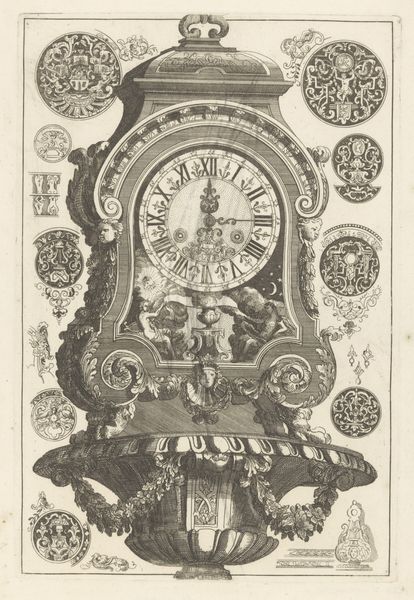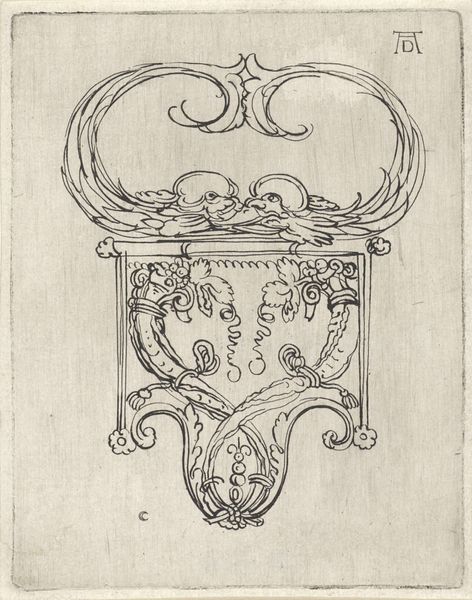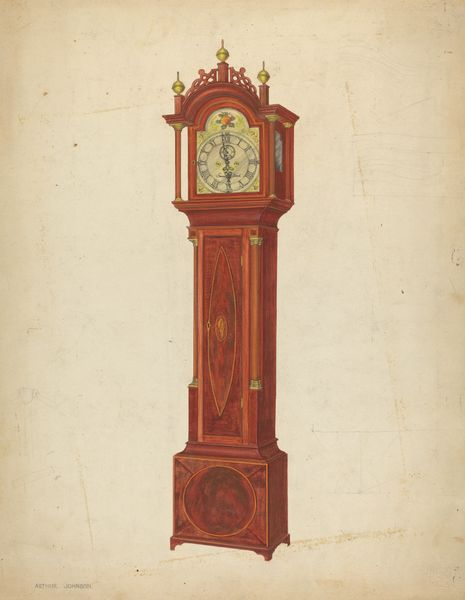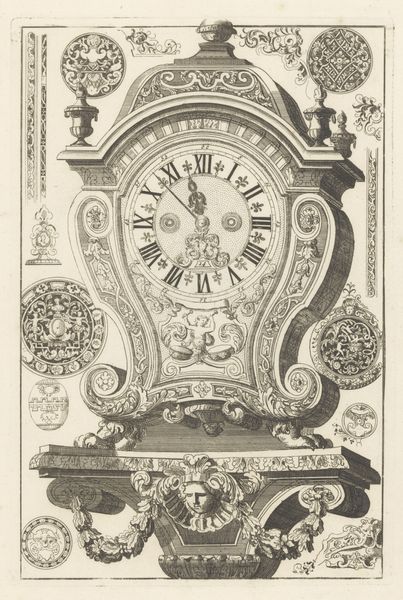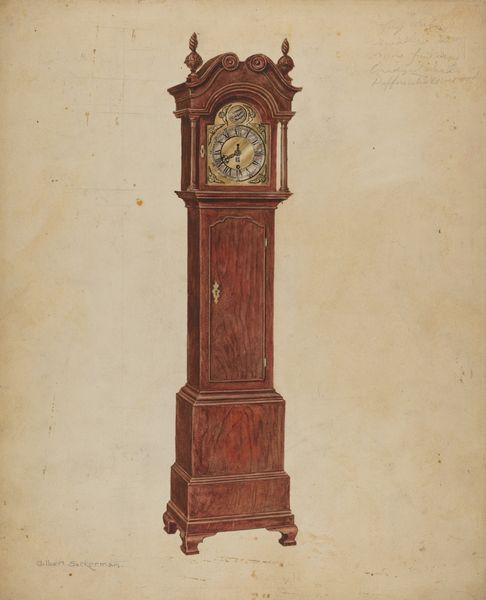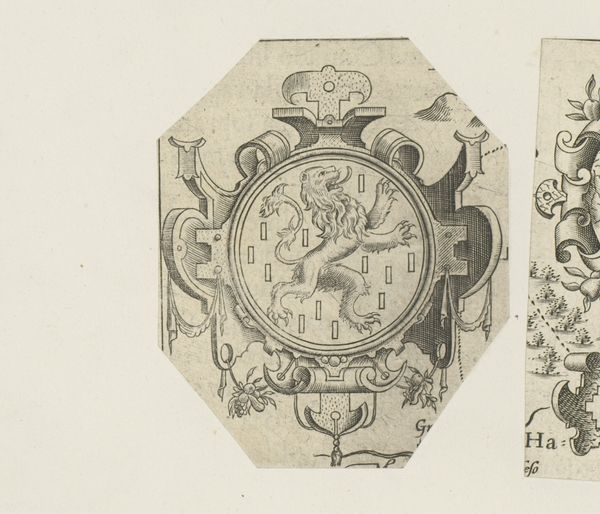
print, engraving
#
baroque
# print
#
old engraving style
#
figuration
#
line
#
history-painting
#
academic-art
#
decorative-art
#
engraving
Dimensions: height 298 mm, width 146 mm
Copyright: Rijks Museum: Open Domain
Curator: Here we have a rather delightful engraving from the Rijksmuseum collection called "Klok met putti," dating from 1719 to 1775, created by an anonymous artist. Editor: My initial reaction is pure whimsy. It’s delicate and slightly outrageous all at once. So detailed! And those chubby cherubs—putti—are adorable. But what's with the time-obsessed putti? Are they watching time slip away with the audience? Curator: Those putti certainly encapsulate the Baroque obsession with ornament and movement. Time was viewed through the lens of grand allegories and symbolic flourishes. The clock itself, adorned with these figures, becomes more than a time-telling device; it's a statement about mortality and the passage of life, don't you think? Editor: Absolutely. But look closer – it’s almost satirical! The putti seem less mournful and more...mischievous. As if they are joyfully pushing time, laughing as the sands fall. Curator: That reading definitely disrupts any sentimental assumptions about clocks and time. It’s worth considering how engraving as a medium contributed to this dissemination of ornament. Prints made these elaborate designs accessible and reproducible. It gave the engraver access to wide scale distributions of artworks they had never personally experienced in some cases. Editor: Which means everyone wanted elaborate, swirling clocks festooned with baby angels, even if they couldn't afford them in reality! You've touched upon distribution - this could be the "influencer" culture of its day? Curator: It is a clever connection to modern influence - mass replication can democratize stylistic preference. Consider the subtle ways Baroque aesthetic elements recur throughout different time periods to follow how we consume artwork over centuries. Editor: Looking at it this way opens the image up to a more fun and nuanced dialogue about temporality – how perceptions about history affect material cultural exchange, or really any moment in life. Makes you think! Curator: Precisely! The image functions on different levels - it represents a historical artifact as an aesthetic item as much as it can embody cultural aspirations, anxiety, memory, influence and transformation across time. Editor: You are absolutely right, It’s amazing how much emerges from these unassuming decorative traces. Now I must go—apparently, I have a baroque clock to catch!
Comments
No comments
Be the first to comment and join the conversation on the ultimate creative platform.
